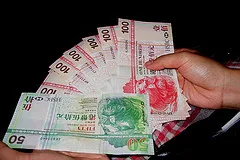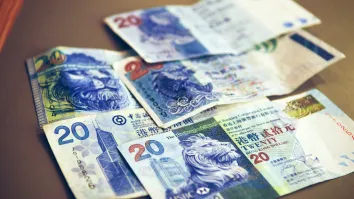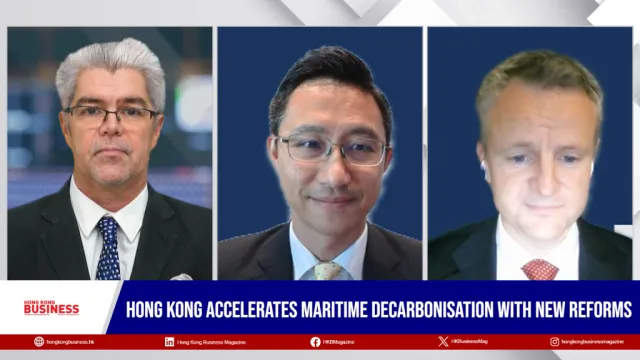
What you need to know about Hong Kong’s seemingly bearish economy
Growth has been falling since September 2010 and inflation reached 7.9% in July - what’s next?
According to Royal Bank of Scotland, Hong Kong growth is more closely aligned with the US than with mainland China.
Here’s more from Erik Lueth of RBS:
| Hong Kong's year-on-year growth has been falling since September 2010 and on a quarter-on-quarter basis the economy contracted by 0.5% in 2011Q2. At the same time, inflation keeps rising at a brisk pace and reached 7.9% in July. While weak growth and rising inflation can coincide in the event of a supply-side inflation shock, the data is at odds with the conventional Hong Kong narrative. The latter maintains that Hong Kong's business cycle is closely aligned with mainland China, while its monetary policy is imported from the US (via the peg). Since China is booming and the US stuck below potential, Hong Kong monetary conditions are too loose, fuelling consumer and property price inflation. This note takes a closer look at the Hong Kong business cycle and the implications for growth, inflation, and the currency peg. A key finding is that Hong Kong growth is more closely aligned with the US than with mainland China. This is immediately clear from a casual glance at Figure 1. Both Hong Kong and US growth weakened when the dotcom bubble burst in 2001, while mainland China sailed through smoothly. Similarly, in the run-up to the great recession, mainland growth accelerated notably, while Hong Kong's remained stable mirroring US growth performance. Correlation coefficients confirm that Hong Kong's economy moved with the mainland 45% of the time between end-1999 and mid-2011, while it moved 85% of the time with the US (and 80% of the time with Europe). What explains Hong Kong's close correlation with the US? After all, Hong Kong exports more to mainland China and millions of Chinese tourists visit Hong Kong every year to shop (equivalent to 3.2 times Hong Kong's population in 2010). A closer look at Hong Kong's exports of goods and services should provide an answer. Exports of goods amount to 180% of GDP, but the overwhelming share of those—175% of GDP—are just routed through Hong Kong and have no major impact on the economy. It is service exports which amount to about 50% of GDP that drive the Hong Kong economy. And if we look at their composition it is immediately clear why Hong Kong is more closely aligned with the US business cycle than with the Chinese cycle. The lion share of Hong Kong's service exports, or 70%, consists of transport services, trade-related services, and financial services—services that are closely related to the global business cycle. Put simply, Hong Kong's status as global trans-shipment centre and global financial centre still dwarfs its status as China's shopping mall. It also dwarfs Hong Kong's status as the gateway to China, since the mainland only accounts for a quarter of Hong Kong's exports of goods and services (and many are destined for other countries). If you still have doubt take a look at Figure 2, which shows Hong Kong's GDP, its exports of trade and financial services, and global trade. The correlation between Hong Kong's GDP and these service exports is nearly perfect (correlation coefficient of 0.9); so is the correlation between each of the two and world trade (0.8). How does the above finding square with Hong Kong's inflation reading? If Hong Kong's growth is so much aligned with the US, how can US monetary policy be so inflationary? Maybe it isn't. It's worth keeping in mind that inflation is not that high by Hong Kong standards. Inflation has been above the current level of 7.9% roughly a third of the time since 1990 (despite moderate inflation in the US). More importantly, the key drivers of Hong Kong inflation may be affected by other things than monetary policy. Figure 3 shows the contribution of various sub-components to headline inflation: Housing or rents stand out as the key driver. Specifically, since 2010 inflation rose by 6.1 percentage points. Out of this 5.3 percentage points were due to rents. Food prices were the next largest contributor with 1.2 percentage points. The inflation of miscellaneous services (not shown) stayed broadly constant, while prices of durable goods continued to fall. The fact that inflation is so concentrated in a few items suggests that monetary policy may not be the main or, at least, only culprit. There is no doubt that low interest rates have contributed to the run-up in property prices and rents, but demand from mainland China, itself faced by pretty accommodative conditions, may also be to blame. Real estate agents reckon that mainland Chinese account for one-third of all property demand in Hong Kong. In response, the Hong Kong authorities in June increased down payments to 60% for borrowers who derive their main income from outside Hong Kong (a proxy for mainlanders). Similarly, food prices are not driven by Hong Kong monetary conditions. They are driven by weather and harvest conditions on the supply side and global monetary conditions on the demand side (in the short-term). The fact that all countries are struggling with food price inflation, irrespective of their exchange rate regime, is evidence of this relationship. Finally, fiscal policy or administrative measures may have played a part. 'Underlying' inflation which nets out the effects from government one-off relief measures during the crisis came to 5.8% in August—more than 2 percentage points below the headline reading. This was due to base effects (Figure 4). What are the implications of the above for growth, inflation, and the exchange rate? In short, I will base growth projections on US economic prospects; model inflation independent of growth and mainly driven by rents; and renew my call that the Hong Kong currency peg is here to stay. Using quarterly data over 1999Q4-2011Q4, I regress Hong Kong growth (yoy) on US growth (yoy). I get a highly significant coefficient of 1.5, suggesting that Hong Kong growth drops by 1.5 percentage point for every 1 percentage point reduction in US growth. Figure 5 plots Hong Kong growth predicted by the estimated equation against actual growth. The fit is pretty good, also evidenced by an R-square of 0.7. The data flow of August has led to a reassessment of global economic prospects. What seemed like a soft patch in Q2 now looks like a much slower recovery weighed down by global deleveraging. This has implication for H2 and 2012. Our US economist now predicts growth of 1.7% in 2011 and 2.1% in 2012, down from 2.7% and 3.4%, respectively. If I plug this into my growth regression for Hong Kong, I get growth rates of 5.3% and 5% for 2011 and 2012, respectively. To project inflation, I first make an assumption about property prices. I project that their annual growth rate falls from 26.5% in mid-2011 to 17.5% by end-2011 and zero by end-2012. This is based on macro-economic tightening in the mainland and the gravity exerted by economic fundamentals. Regarding the latter, rental yields in Hong Kong average 3%—and 2.3% for luxury apartments—way below a reasonable benchmark of 5%. Now, I project (new) rents based on the mom growth of property prices. This seems to be a reasonable assumption given the past record (Figure 6). Since rents are negotiated for 2 years in Hong Kong, I project the housing component of the CPI based on the 24-months moving average of rents. Again, this seems to be a reasonable approach, given the past record (Figure 7). Finally, I assume that the inflation contribution of the non-housing component remains at current levels of 3% throughout 2012. This simple framework yields annual average inflation of 6% in 2011 and 6.8% in 2012. On a monthly basis, inflation yoy would peak at 8.8% in September 2009. What are the implications of the above findings for Hong Kong's currency peg? The divergence between Hong Kong's business cycle and monetary policy has been a key argument of those predicting the near end of the peg. This note shows that the divergence may be smaller than propagated. From this angle, the downward revision of global growth may be welcome news for Hong Kong's property market and inflation. Other rationales for the peg's near end have been put forward (e.g. renminbization). |



















 Advertise
Advertise






